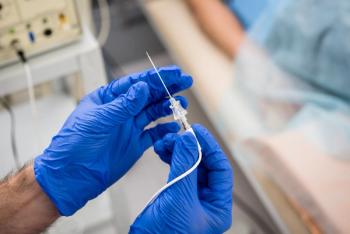
Top 5 findings about IPF patients
Most idiopathic pulmonary fibrosis patients have considerably impaired lung function and gastroesophageal reflux disease is the most common co-morbidity, according to initial results from the IPF-PRO Registry.
Most idiopathic pulmonary fibrosis (IPF) patients have considerably impaired lung function and gastroesophageal reflux disease (GERD) is the most common comorbidity, according to initial results from the IPF-PRO Registry.
Related:
The 5-year IPF-PRO Registry, which is actively recruiting 300 IPF patients, is an academic-industry alliance between Boehringer Ingelheim Pharmaceuticals and the Duke Clinical Research Institute to better understand outcomes and disease progression for people with IPF.
Boehringer Ingelheim shared the initial results of the first 49 people enrolled in the I
Related:
“We are very excited to share this first look at real-world patients with IPF across 18 IPF academic centers in the United States. Over time, we look forward to helping the IPF community learn more about disease progression, quality of life and other outcomes that are important to patients,” said lead study author Michael Durheim, MD, medical instructor in the Department of Medicine at
The top 5 findings from the initial IPF-PRO Registry are:
- Most people exhibited symptoms of IPF for more than a year before being diagnosed.
- By the time of enrollment, many people exhibited considerably impaired lung function, with a median forced vital capacity (FVC) of 72% and diffusing capacity of carbon monoxide (DLCO, or the measure of the lungs’ ability to transfer oxygen to red blood cells) of 39%.
- Twenty-nine percent required supplemental oxygen when resting, and 45% required supplemental oxygen during activities.
- Nearly all patients (98%) received a high-resolution CT scan as part of their diagnosis, while 20% also underwent surgical biopsy to examine for signs of IPF.
- The most commonly reported comorbidities of IPF were gastroesophageal reflux disease (GERD) (69%), coronary artery disease (31%) and sleep apnea (29%).
“These results showed us that many patients already have significant respiratory impairment by the time they are diagnosed by a pulmonologist, which reinforces what we know from ongoing research,” said Danny McBryan, MD, vice president of clinical development and medical affairs, respiratory, for
Read next:
Newsletter
Get the latest industry news, event updates, and more from Managed healthcare Executive.




















































